Tours in Croatia
Full of history & culture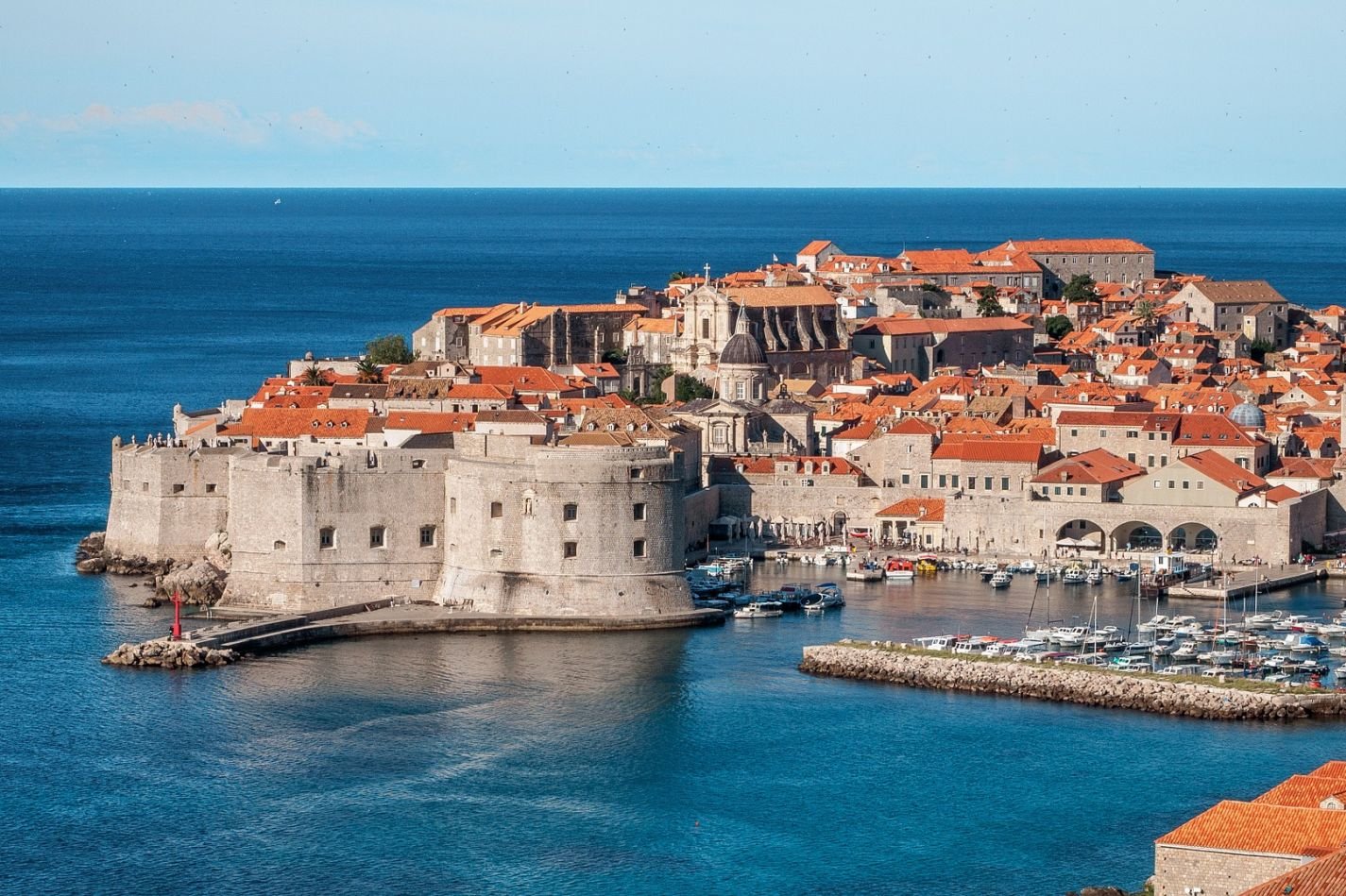
Adriatic Islands and Coasts
Experience the ancient beauty of Dubrovnik, where the popular Game of Thrones is filmed, and the lush green hills and vineyards of Croatia’s southernmost region, Konavle.
Croatia is a wonderful country famous for its pebble beaches, crystal clear Adriatic sea, mountainous coastline, sublime food, and great wines. A country of dramatic landscapes and dreamy seascapes, Croatia is now easier to visit than ever before. Croatia has more coastline than Portugal and France combined and more islands than the Maldives.
Croatia has a lot to offer to its visitors. Despite its reputation as the hottest vacation spot in Europe, Croatia hasn't let its popularity go to its head. Croatia isn't here to brag. It's here to provide a vacation that's the perfect balance of historical refinement and Mediterranean beach entertainment. Some cities boast a glamorous nightlife complete with celebrity visitors, yachts, cocktails and high-end shopping while others have retained the sweet innocence of the early rural farmlands.
Croatia has been developing its tourist offer rapidly, and today, regardless whether you are an outdoor enthusiast looking for adrenalin pumping activities, a couple in search of romantic places filled with culture and history, or family traveler looking to relax and enjoy kids friendly activities, Croatia won't disappoint you. You'll find here interesting architecture, excellent food and wine, tons of historical, cultural and natural sites to take your breath away, great beaches, and loads of activities to do - from rafting, kayaking, sailing, kite-surfing, to zip-lining, truffle hunting, paragliding and rock climbing. Life shouldn't just be filled with days; days should be filled with life. And there is nowhere better to put this philosophy into practice than in Croatia!
Official site: https://www.croatia.hr/en-GB
The best time to visit Croatia is during the “shoulder-season” months of May and June and September and October. Then you can expect pleasant sunny days ideal for swimming in the sea and sunbathing, with all the tourist facilities are up and running but no crowds. It’s also the perfect time for outdoor activities such as hiking, mountain-biking, rafting and sea-kayaking. In contrast, the peak season of July and August sees the coastal resorts extremely busy, with soaring temperatures and a steep rise in hotel room prices – on the plus side you get open-air cultural events and a buzzing cosmopolitan nightlife.
Language : Croatian
Currency : [HRK] Kuna
Timezone : GMT +2
Airports : Franjo Tuđman Airport [ZAG]
Annual Number of Visitors : 18.5 million (2017)
VISA : http://www.mvep.hr/en/consular-information/visas/visa-requirements-overview/
Croatia is a perfect destination for a road trip. Roads are in great condition, and scenery is breath-taking. Bus network is extensive in Croatia, and is awesome and reliable. Forget trains, and look for buses instead. Taxis are super expensive, and the drivers aren’t always polite. Stay somewhere central and then do day trips from your base location. Almost everybody speaks at least a little English. A few things to take with you to Croatia are mosquito repellent, adapters, filter coffee, and water shoes for Croatian rocky beaches.
Forest/Jungle, Local Culture, Mountains, Island, Beaches, Local Cuisine, Sunbathing, Boating, Hiking/Camping, City, Off the Beaten Path, Museums, Landmarks/Sights, Walking Tours, All Water Activities, Party/Nightlife, Scuba/Snorkeling, All Active/Outdoor, Fishing, Mountain Biking, Rock Climbing, Family Friendly, Bars, At Sea, Peace and Quiet, Romantic
Camping
Recognized both by experts and enthusiasts as one of the best places to camp in Europe, Croatia is a country with a long tradition of camping and ecotourism that has over 526 camping sites, from family friendly mini-campsites to fully-equipped mobile home facilities. When camping in Croatia, you can sleep tight under the stars and wake up your wild side.
Sailing
Croatia is a paradise for sailing holidays. Sailing is actually the best way to see the coast and to enjoy fully its beauty. You can rent a sailing boat with or without crew, if you don’t already own one. Many charter companies offer sailing boats, motor yachts or catamarans to rent. Discover hidden coves, beautiful bays full of lavender scent, and deserted islets with ancient olive groves. Enjoy fresh seafood and exquisite wines in local restaurants in the remote bays. Or just anchor anywhere and soak in the Adriatic.
Wine tour
Wine is important part of Croatian lifestyle, and it has always played an important role in the country’s economy. Throughout the year, but especially during the autumn harvest time, the wine roads in Croatia are filled with people looking to enjoy and celebrate local festivals, such as San Martin. All over the country you can visit gorgeous wine cellars and tasting rooms, neatly planted vineyards, and find your way around driving on Croatian wine routes.
Island hopping
Croatia has over 1,000 islands. The way of life on Croatian islands is stunning. Sometimes, it feels like the time has stopped. Roads are narrow. It looks like a novel and not a real life. Of course, not all of the islands are the same; neither all the towns on the same island are the same. Some offer peace and quiet, others offer 24-hour parties. You can hop between the islands on the ferries, catamarans and passengers boats, on your own sailing boat or booking an island hopping cruise.
Nature
Dive into one of the ecologically best-preserved parts of Europe since the 10% of the country is protected. Explore its National Parks and Nature Parks and feel the energy in this green paradise with a privileged climate and a unique fauna, such as griffon vultures, wild horses, and brown bears, and flora with more than 3,000 different species in certain locations. The best place to get lost, the best place to find yourself.
Gastronomy
Explore the diversity of Croatian cuisine and discover its wonderful specialties. From north to south and from east to west, from the shores of the Adriatic in Dalmatia to the valleys of Slavonia, each region of Croatia has its own special culinary personality that will surprise you. When sun-soaked fresh ingredients meet in a melting pot of amazingly diverse culinary influences, you can’t help but crave another bite. Go ahead, there’s always room for more. Let your taste travel across centuries of tradition and relish every moment.
Health & Wellness
Croatia is a country of a special energy and healthy living. Nature itself has already opened the way, particularly in the coastal area, with natural aromatherapies whose beneficial effect is felt during a walk along the trails of medicinal plants. The majority of the most famous and most renowned Croatian thermal springs and spas are located in Central Croatia. A whole range of medical programmes that the local spa institutions offer are based on the application of natural therapeutic means such as the hyperthermal water and naturally therapeutic mud.
Adventure Sports
Croatia, with its rugged mountains, fast rivers, karst topography, and Adriatic sea, has a lot to offer to outdoor enthusiasts. From paragliding, zip-lining, kite-surfing, kayaking, rafting, windsurfing, and other adrenaline pumping activities, you’ll have plenty to choose from in Croatia. Many lovers of the great outdoors go to Croatia specifically for its adventure-sports facilities – between the sea and the mountains, sailing, scuba diving, mountain biking and rock climbing are all on offer.
Heritage
Another magical reason to visit Croatia has to do with its large number of UNESCO World Heritage Sites. Croatia has eight sites considered “cultural” and two sites that are considered “natural”. Most of the small towns have historic centers with typical Croatian architecture and well-preserved local history. Many have cobbled stone streets with cafes right near the water. Oh, and don’t forget that the Game of Thrones was filmed in Croatia!
In South Dalmatia sits the island of Korčula, on which there is a tiny peninsula. The town is protected by medieval walls and towers. This is another car-free city with stone alleys in a herringbone pattern to give shelter to the winds. The area is littered with old aristocratic stone buildings from the times of Venetian rule. One of the most popular attractions is the home and birthplace of Marco Polo, the 13th century explorer.

The orthogonal street plan of this island settlement originates from the Hellenic era – consecutive rulers continued to decorate it with exceptional residential buildings and forts. Its beautiful churches are supplemented with exceptional renaissance and baroque buildings. The most significant building is the Trogir Cathedral, a masterpiece of Radovan and a significant example of roman and gothic art in Croatia.

Dubrovnik is the most famous and most visited tourist destination in Croatia. A unique Renaissance city in the Mediterranean with preserved city walls, built from the 13th to the 17th century, Dubrovnik’s old town was declared a World Heritage Site by UNESCO in 1979. Dubrovnik is known as the pearl of the Adriatic, thanks to its strategic location on the Dalmatian coast and its stunning Gothic and Baroque architecture. Since the HBO show debuted, the city saw such an exponential rise in tourism that it has dubbed it the Game of Thrones effect.

Brac Island (pronounced “Bratch”) is the longest and most elevated island in central Dalmatia. Despite its proximity to Split, Brac is less visited than the glittering islands of Hvar and Korcula further south. Brac is a relatively dry island but there are some lovely spots along the rocky shores and great scuba diving from Lucice Bay. Don’t miss the olive oil in Brac! The olives are of a rare variety called buhavica and there’s over a half-million trees. Brac is most famous for its beautiful white building stone which has been exploited since ancient Rome. Supetar is the main entry point to Brac and its capital.
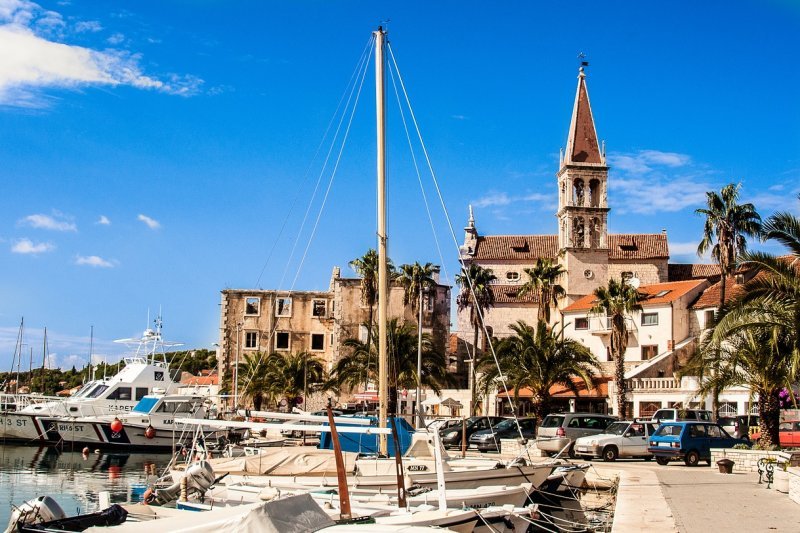
Split, in central Dalmatia, has it all: Roman ruins and grand museums alongside fashionable cafes and trendy shops. But what makes this city most alluring is not just its proximity to the sandy beaches and rocky coves of nearby islands, but its location overlooked by mountains and edged by the deep blue Adriatic Sea. Its the breathtaking centerpiece of the city — Diocletian’s Palace, a UNESCO World Heritage Site dating back to A.D. 295, and a film location for “Game of Thrones” — that makes Split so memorable.
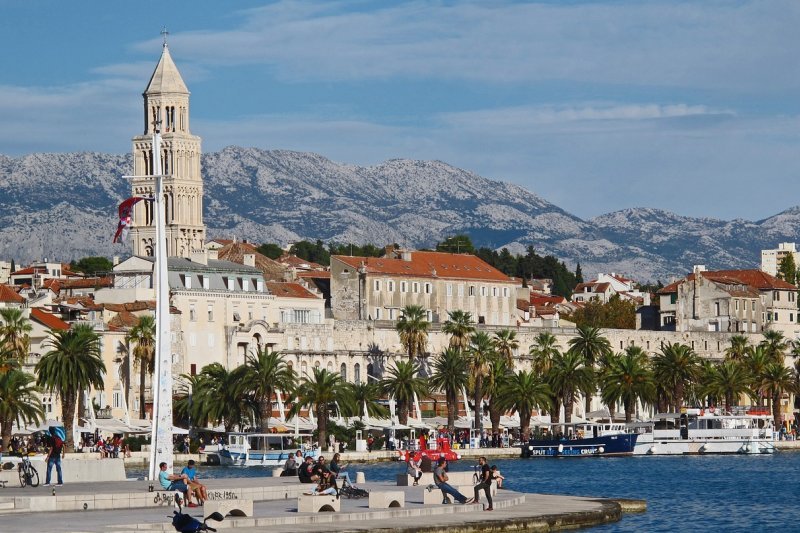
The Dalmatian Islands are a popular Croatian destination, the most frequented being Hvar. In Hvar town, you can find some of the best rated hotels and seafood restaurants in the country. The car-free town dates back to the times of Venetian-rule, from 1420 to 1797. As well as world-class dining and accommodations, visitors can enjoy a 16th-century cathedral, a fishing harbor, and a hilltop fortress. The renovated Venetian townhouses, on winding little streets serve as a backdrop to the wildest nightlife on the Adriatic.
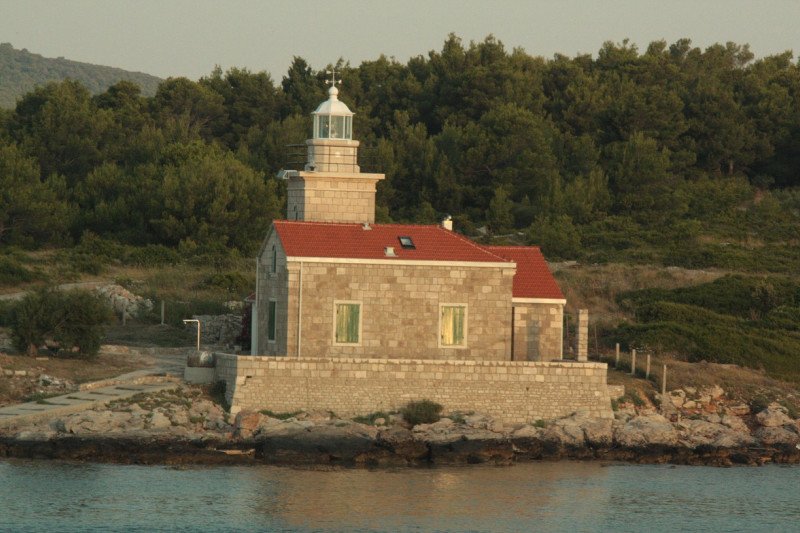
Rovinj is the most beloved town in Istria, a top sight in Croatia, and one of its most romantic spots. The sheer physical beauty of Rovinj is exhilarating. The pastel houses crammed onto a peninsula catch the sunlight during the day and shimmer with light at night. The Venetian bell tower of the St. Euphemia Cathedral extends like a punctuation point to the sky. Restaurants augment local seafood with creative pasta and pizza dishes not only to tempt their visitors but because the locals have developed a taste for Italian cuisine. Wander the jumble of side streets to find the sea peeking out of unlikely corners. Suddenly there’s an ancient arch or plaza centered around a sculpted fountain. Part of Rovinj’s charm is that it’s still an active fishing port. Head down to the harbour in the morning and examine the day’s catch.
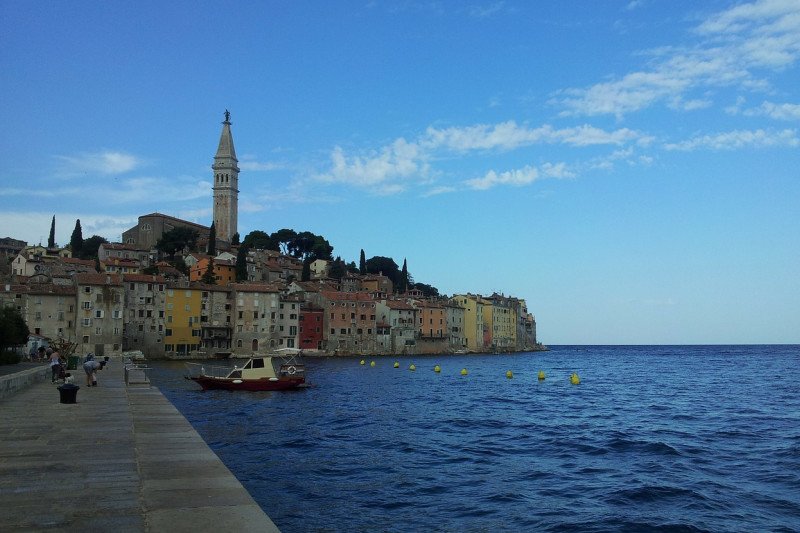
Zagreb is a world away from the sun-soaked islands and seascapes of the Adriatic, with a charm all of its own. Although it’s the capital of Croatia, Zagreb is sometimes overlooked as a destination by visitors to the country. Today’s Zagreb Old Town is the melding of two smaller towns: Kaptol (where the Zagreb Cathedral stands) and Gradec, the Upper Town. Dating to the 13th century when the hill-topping town was surrounded by city walls and protective watchtowers, the Gradec cobblestone streets are ideal for a stroll when sightseeing Zagreb. Zagreb is also called a city of museums as there are more of them per square foot than any other city in the world. It also has many fine sights, plenty of restaurants, cafes and bars, lots of entertainment and regular events, a huge selection of accommodation and some decent shopping.

Vukovar is situated in the eastern part of Croatia, at the place where the Vuka enters into the Danube, held lovingly by both Slavonia and Syrmia. Vukovar is a gift from its rivers, a city of amazing harmony and strong, ancient, and welcoming Danube, and the local flavour of Vuka – capricious, shaped by the plain, the nature’s whims, and the Slavonian land. Vukovar is an important symbol of resistance to Croats, and memorial tourism is deeply embedded in the fabric of the place. However it’s also the kind of town where you can laze beside the river, go cycling in parks, dine on catfish, and marvel at one of Europe’s most compelling prehistoric sites.

Numerous monuments have enriched the town’s culture. So when in Opatija, take a break from the beach and go sightseeing. Renaissance, Venetian, Gothic, ornate Secession, Classicism, Alpine Baroque…buildings of completely different styles have been erected in this popular tourist resort throughout history. Discover for yourself why Opatija has been one of the most popular destinations for sightseeing in Croatia since the 19th century when the Habsburgs turned it into one of Europe’s most popular destinations where nobles and aristocrats enjoyed in moments of peace and quiet far from their courts and daily politics.

Rijeka is the third largest city in Croatia with regard to the number of inhabitants. The city is situated along the course of Rječina River and nearby numerous streams. It lies on abundant sources and confluences. Like numerous cities in the world, Rijeka carries the symbol of water in its name. Rijeka is a bustling blend of gritty 20th-century port and Italianate Habsburg grandeur. It’s a surprisingly verdant city once you’ve left its concrete core, which contains Croatia’s largest port, with ships, cargo and cranes lining the waterfront.
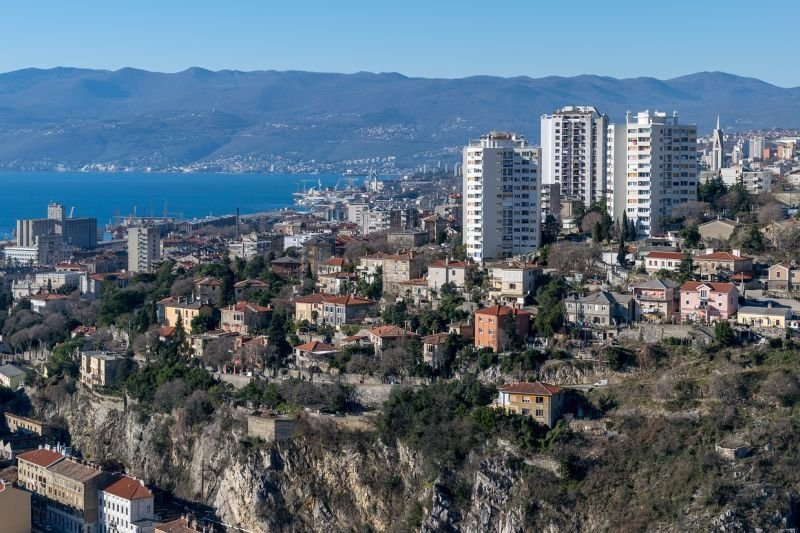
Zadar region occupies the centre of the Adriatic with six towns – Zadar, Nin, Biograd na Moru Pag, Benkovac and Obrovac. It is a region of pleasant Mediterranean climate, larger sea than land surface, natural wealth and variety. The cultural and historical heritage and monuments of the thousands of years of existence are enriched by the variety and uniqueness of tradition and the way of living. The city of Zadar, according to the words of the Byzantine emperor, is older than Rome, nowadays is one of the stronger tourist centres in Croatia.
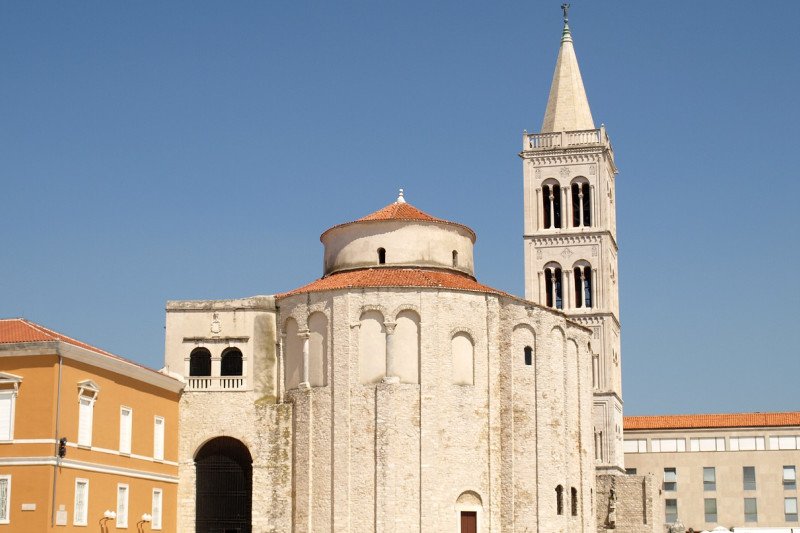
Ruling the Adriatic from the southern end of the Istrian Peninsula, Pula has been a strategic prize for a host of power players, going back to the Romans. This city with its natural harbour was developed in Augustan times, and a breathtaking amphitheatre, temples and a collection of arches have survived for 2,000 years. The Romans founded Pula as Istria’s main port back in 46 BC and the ruins are now part of the contemporary city. What remains is a city jammed with majestic old buildings, but also in a stunning hillside location hemmed by natural parks.

Varaždin is the city of baroque, young people, music, flowers and bicycles. “Little Vienna” with rich natural legacy interwoven in parks, a must see destination, located in the North of Croatia on the southern bank of the River Drava. Varaždin was built over the centuries and different stylistic influences, varying fashions of certain historical periods and wishes of the investors created an interesting and somewhat unusual harmony of flora and fauna, mythical animals and unusual characters built into the facades of the houses and palaces in the historic City core.
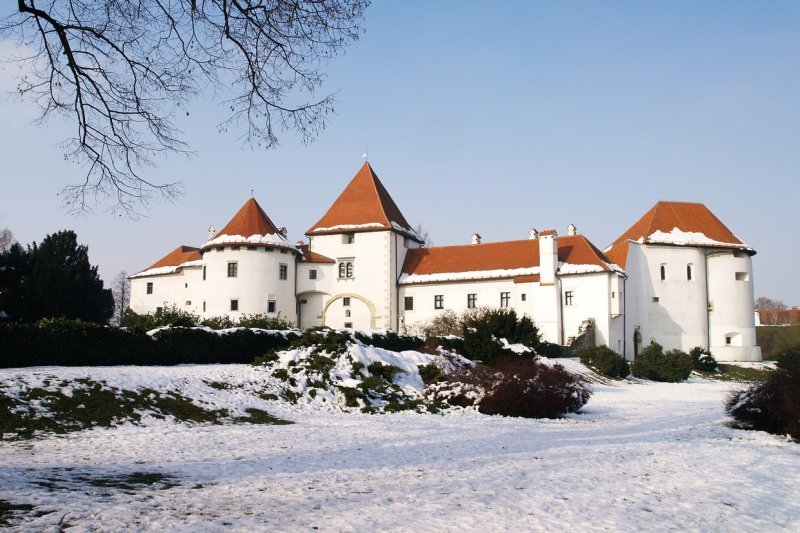
The Museum of Broken Relationships features seemingly mundane and insignificant objects accompanied by captions that explain their relevance in a failed relationship. It explores the “love, pain, drama, irony, humour and reconciliation” of break-ups.
The remains of Diocletian’s Palace in Split, is now the buzzing heart of the city. Among the ancient columns, temples, walls and underground cellars that once made up the Roman emperor’s retirement home, you’ll find dozens of hidden bars, restaurants and shops.
The Castle is a sweeping Baroque cake of a building that looks out on riverside meadows. Inside is one of Croatia’s best museums, offering everything from bronze-age jewellery to the boots made by legendary footwear manufacturer Bata, who set up shop in Vukovar in 1931.
The holy grail of Game of Thrones artifacts, the official Iron Throne, is located in a small museum on the island of Lokrum, a mere 15-minute ferry ride from the Old City’s main port. Head to the island’s famous cliffside swimming spot and take a plunge into the pristine Adriatic waters.
The statue of Maiden with the seagull is a symbol, not only of Opatija, but the entire Kvarner region. Elegantly standing on the reef beside Lungomare promenade in Opatija, it intrigues all passengers with her interesting story and identity which was unknown for decades.
This triumphal arch was erected to commemorate the powerful Sergii family’s participation in the pivotal Battle of Actium in France. It dates to about 30 BC and was a city gate leading up from the naval port. Carved into the stone are friezes depicting cupids and garlands.
The Trsat Castle represents a strategically embossed lookout on a hill 138 m above sea level dominating Rijeka. This location served well to the Romans to establish their defence system, the so-called Liburnian limes, whose starting point was the Tarsatica fortress town – which was situated at the site of today’s Old City of Rijeka. The castle is one of the oldest fortifications on the Croatian coast which preserves the features of the early medieval town construction. Today the castle has been enriched by new facilities and events – visual arts gallery, open-air summer concerts and theatre performances.
Pula’s emblematic Roman Amphitheatre is one of the most complete in the world. It’s not just that the three storey-high arched walls and four towers around the perimeter are still standing, the arena displays the incredible inner-workings of an amphitheatre in vivid detail. You can see the underground passages used by Gladiators, and the cisterns that channelled perfumed water to the 20,000 spectators. This wonderful monument dates to the first century and one of the reasons it has survived is because medieval knights were still using it for tournaments 1,000 years after it was built.
The arch has an eroded carving of Hercules, but you can also make out the names of two contemporary Roman officials. Although this landmark may seem modest, it’s one of the earliest pieces of Roman heritage still standing in Pula. On either side of the gate are medieval towers that made up the city’s defences on the original Upper Circular Street.
The Museum of the Vučedol Culture, 5 kms out of town on the banks of the Danube, is one of the most exciting and well-represented archeological museums anywhere in Europe. Built into the hillside below the original excavation site, this award-winning structure celebrates the copper-smelting civilization that flourished hereabouts 5,000 years ago.
The temple was built during the reign of Augustus, which makes it more than 2,000 years old. This temple has survived so well because it was converted into a church when the Romans adopted Christianity, although later it became a granary before settling on its present role of lapidarium in the 19th century. Step inside to see ancient pieces of stonework and bronze sculptures from around Pula.
A few easy kms down from Pula is Istria’s southernmost point – a craggy headland with a constellation of little islands offshore. The scenery has a kind of stark beauty to it, with bare cliffs and otherworldly rock formations used by youngsters to dive into the Adriatic’s smooth, clear waters. The best beaches are on the west side of the cape, which has a long sequence of shingle coves or rocky terraces that lead down to the water.
With a dramatic home inside the Austro-Hungarian fortress Verudela, Pula’s Aquarium is the largest in Croatia. Blending neatly with the fort’s stone architecture are tanks with freshwater and marine species native to Croatia and the Adriatic, together with tropical displays, a turtle rescue centre (the only one to be found in Croatia) and an entire room devoted to sea horses. The centrepiece of the attraction is the shark tank, which is found in the former atrium of the fortress.
The park is absolutely stunning, with densely wooded islands ringed by narrow white beaches. Seek out the natural history sites on Veliki Brijun, where 200 dinosaur footprints from the Cretaceous period have been found. The only way into this park from the mainland is to head to the town of Fazana a few kms north of Pula. From there, catch the regular boat service out to the archipelago. You can also see the remnants of a Roman villa and a Knights Templar church.
Pula’s Austro-Hungarian era, during which it was the Empire’s main naval port, left the city with a striking set of coastal military defences. There are plenty of forts, together with batteries, trenches and tunnels many and all of the fortresses have a circular form, designed to help deflect artillery. You can get hold of a map of these installations and track them down on a walking trip. And what’s great is that many, such as Fort Bourguignon and Fort Punta Christo, have lofty hilltop positions where the vistas are fabulous.
The main entrance to Old Town, busy Pile Gate in the old time built in 15th century used to have a wooden drawbridge which used to be pulled up at night to prevent unwelcome guests entering the medieval, walled city. The drawbridge was replaced by stoned one long time ago so nowadays, the beautiful stone bridge leads across the small green passage through the Gate to the Old town and down the steps to Stradun, the main promenade. Right above the entrance, the Gate is embellished with statue of Sveti Vlaho, the patron saint of Dubrovnik.
Tower Lovrijenac is also known as St. Lawrence Fortress. It is located on a large cliff just outside the western edge of Dubrovnik’s city walls. Lovrjenac has a triangular shape and includes three terraces that rise 37 m above the Adriatic.
On the south side of the Gundulic Square, a monumental Baroque staircase leads to the Poljana Ruđera Boškovića where the Church of St. Ignatius and Collegium Ragusinum, Dubrovnik’s reputable Jesuit college, are located.
Dubrovnik’s walls are featured in many Game of Thrones scenes – in fact, these ancient barriers are the main reason Game of Thrones went to Dubrovnik in the first place. For a small fee, visitors can climb up these stone walls and walk the whole circumference of the city. It’s touristy, but for a good reason: every section of the walls offers a specular view of either Dubrovnik’s terra-cotta rooftops or the glimmering Adriatic Sea. A walk along these famous city walls that surrounds the Old Town is a unique and wonderful experience and a must-do when visiting Dubrovnik. The walls are 1,940 m long and you can walk all the way around them (it usually takes about 2 hours). However, you can get down half way.
Overlooking the city of Split, in the mountain pass between Mosor and Kozjak, lies the small village of Klis speckled with vineyards and olive groves. At the center of this hillside village is a medieval fortress built into a rocky ridge giving visitors an incredible birdseye view of the entire Split, Adriatic Sea and surrounding islands. The Fortress of Klis has a history of more than 2000 years, beginning with the Illyrian tribe called Dalmatae that used it as a stronghold before it was taken by the Romans. After the fall of the Roman Empire, the site became a seat for several Croatian kings. The view from the top of the fortress alone is worth the small price you pay to enter. Go at sunset if you are here during winter.
Plitvice Lakes is the oldest and largest national park in the Republic of Croatia. The park is situated in the mountainous region of Croatia, between the Mala Kapela mountain range in the west and northwest, and the Lička Plješivica mountain range to the southeast. With its exceptional natural beauty, this area has always attracted nature lovers. The process of tufa formation, which results in the building of the tufa, or travertine, barriers and resulted in the creation of the lakes, is the outstanding universal value, for which the Plitvice Lakes were internationally recognised with their inscription onto the UNESCO World Heritage List. The park is primarily covered in forest vegetation, with smaller areas under grasslands. The most attractive part of the park – the lakes – cover just under 1% of the total park area.
The paradise beach Zlatni rat is one of the most beautiful beaches on the Croatian coastline and at the same time the most representative panorama of Bol. It was created by deposits of fine pebbles as sediment around the underwater reef, spreading as a small tongue as much as 500 m into the sea. The very tip of Zlatni rat keeps changing its shape constantly due to the influence of winds, waves and sea currents, making it appear different and repeatedly interesting. This location is a protected natural area and a favorite spot for surfers and kite-surfers from around the globe. It is only 2 km from Bol. You can reach the beach either by car or by a 20-minute walk along the sea. During the summer months, every half an hour there is a small tourist train going to the beach, as well as tourist boats that take off from the port of Bol.
Zadar’s forum is the most faithful image of an ancient city – not because of preserved ancient buildings but because of its undisturbed layout. It’s the largest forum in Croatia commissioned by the first Roman Emperor Augustus, as evidenced by two inscriptions in stone from the 3rd century which were placed upon completion. It was the centre of the entire public life, the largest on the east coast. After a violent earthquake in the 6th century, the buildings surrounding the forum were destroyed.
The Zadar Sea Organ is a 70 m long natural music instrument with 35 organ pipes placed under the concrete waterfront in a specific position so that the sea and wind movements produce a beautiful sound. These organs are the only organs in the world played by nature itself. The sound is produced with no moving parts, solely from the vibration of air driven over an open window and against a sharp lip called a Labium. These stairs descending into the sea are Zadar’s top place for relaxation, contemplation and long conversations and gossips.
Opatija’s best-known footpath – the famous coastal promenade that stretches from Volosko to Ičići and Lovran – is officially named the Franz Joseph I Promenade, though it is still best known as the Lungomare. Dating back to the heyday of Opatija as a health and tourist resort at the turn of the 19th and 20th centuries, the Lungomare was built in parts. Ever since, the Lungomare has been a favourite walking path for local people and their visitors, a motif of countless photographs and paintings, and an essential part of Ičići’s townscape when viewed from the sea.
Krka National Park lies within Šibenik-Knin County, and covers a total area of 109 sq km of the loveliest sections of the Krka River, and the lower course of the Čikola River. The most frequently visited areas in of Krka National Park are Skradinski buk and Roški slap. Skradinski buk is one of Croatia’s best known natural features, made up of travertine cascades, islands and lakes. The waterfalls are easily accessed and attractive for all true nature lovers, those interested in national customs and all those looking to enjoy the hospitality and culture offered here.
The Trsteno Arboretum, the oldest in this region of Europe, rolls down the rocky terrain to the turquoise Adriatic Sea, magnificent gardens that have been preserved with loving care over the centuries. Located around 12 kms from Dubrovnik the village of Trsteno is a small picturesque place, a typical Dalmatian village overlooking the Adriatic.
Zadar’s “Greetings to the Sun” is a 300 multi-layered glass plates installation in level with the stone paved promenade covering a 22 m diameter circle. It absorbs sunlight during the day and at sunset, when the lighting elements activate, produces an impressive light show following the rhythm of the waves and sounds of the nearby Sea organ.
The Krka Monastery, the spiritual centre of the Orthodox faith, stands 3.5 kms east of Kistanje, in a bay on the Krka River. A church built in the Byzantine style stands next to the monastery. Below the church there are ancient Roman catacombs, which are open to visitors. The monastery was named after the Krka River, which abounds here in plant and animal species, thanks to the water which provides them with life and the peace that is assured due to man’s absence. The Krka Monastery can be visited by organized boat excursions (lasts 2.5 hours) from Roški slap and it can also be reached by road from Kistanje.
St. Mark’s Church is one of the oldest buildings in Zagreb, located in St. Mark’s Square and easily recognizable by its colourful roof.

Experience the ancient beauty of Dubrovnik, where the popular Game of Thrones is filmed, and the lush green hills and vineyards of Croatia’s southernmost region, Konavle.